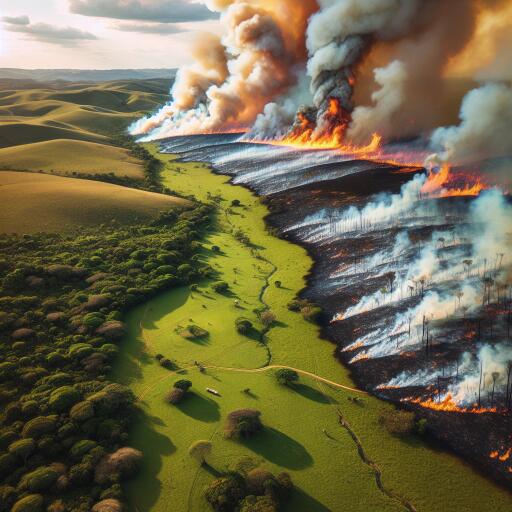
Lake Fire Threatens Sedgwick Reserve; Nearly Half Already Burned
The Lake fire has wrought significant destruction on the Sedgwick Reserve, a crucial research area dedicated to understanding the complexities of climate science and fire ecology. Situated in Santa Barbara County, this ecological treasure has seen nearly half of its 6,000 acres consumed by flames. The reserve is a key component of the University of California’s Natural Reserve System and is managed by the University of California-Santa Barbara.
Emerging on the afternoon of July 5 near Zaca Lake, the Lake fire had spread to cover 36,707 acres by Friday morning, with containment efforts reaching 16%. The origins of the fire remain under investigation, highlighting the challenges and unpredictabilities of wildfire management.
The fire’s impact on the Sedgwick Reserve is considerable, posing threats to valuable scientific equipment, research sites, and the reserve’s unique natural habitats. Nikki Evans, an outreach and communications specialist at the Sedgwick Reserve, has shared that thousands of acres, including numerous scientific installations and natural communities, have been affected.
Efforts to combat the fire’s spread have been intense. Firefighting teams established a frontline along Figueroa Mountain Road at the north boundary of the reserve, shortly after the fire encroached on the reserve’s lands. The battle against the wildfire spans the northern, eastern, and central areas of the reserve, with special measures like dozer lines being deployed to shield structures and important research facilities within the reserve’s 10-acre field station.
Home to up to 50 active research projects at any given time, the Sedgwick Reserve serves as a hub of scientific inquiry, particularly in the areas of prescribed burning and wildfire mitigation strategies. This collaborative effort brings together fire professionals, local tribes, property owners, and researchers in a shared mission to explore the benefits of controlled burns for wildfire prevention and ecological management.
The reserve supports a wide array of research endeavors, from studying the effects of fire on local ecosystems to investigating the responses of flora, fauna, soil, and atmospheric conditions to prescribed fires. Among the unique assets at risk from the Lake Fire are a meteorological flux tower vital for wildfire prediction research, a deep space telescope, a seismic array aimed at enhancing earthquake forecasting, and various smaller research instruments critical for ecological studies.
Moreover, the Sedgwick Reserve’s landscape has been the focus of NASA scientists working to gather unprecedentedly accurate and high-frequency data on plant and aquatic ecosystems. This project is part of a broader initiative to monitor ecological changes across extensive regions, reinforcing the value of the reserve as a research platform.
The University of California’s Natural Reserve System, to which the Sedgwick Reserve belongs, encompasses 41 distinct ecological sites managed by various UC campuses. These reserves are instrumental in studying California’s diverse ecosystems and advancing our understanding of environmental science.
In addition to the Sedgwick Reserve, UC Santa Barbara oversees several other reserves including the Carpinteria Salt Marsh Reserve, Coal Oil Point Natural Reserve, Kenneth S. Norris Rancho Marino Reserve, Santa Cruz Island Reserve, Sierra Nevada Aquatic Research Laboratory, and Valentine Camp. These sites collectively contribute to a broader understanding of ecological dynamics, conservation strategies, and environmental science education.





Leave a Reply